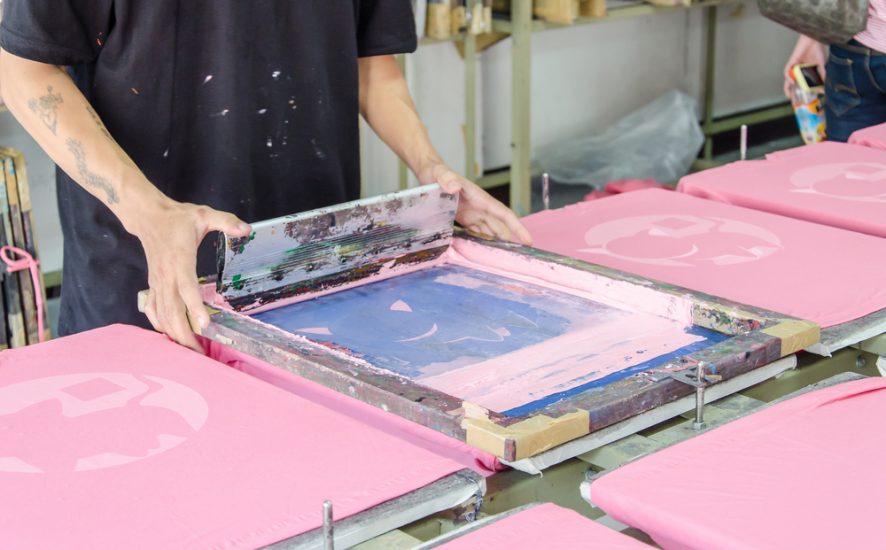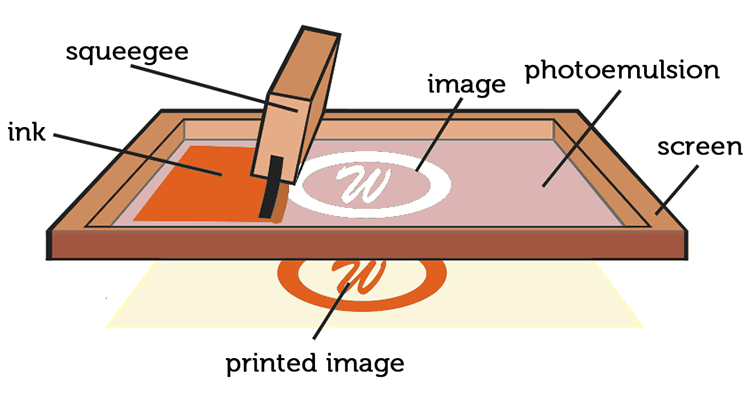Indicators on Tx Tees You Should Know
Indicators on Tx Tees You Should Know
Blog Article
What Does Tx Tees Mean?
Table of Contents3 Simple Techniques For Tx TeesAbout Tx TeesThe 2-Minute Rule for Tx TeesThe smart Trick of Tx Tees That Nobody is Talking AboutGetting The Tx Tees To WorkThe Ultimate Guide To Tx TeesUnknown Facts About Tx Tees
Add up other expenses, like the number of utilities it takes to run the store and the expense of ink and solution per layout. Take the print listed below.The emulsion needs to just be a few cents considering that you 'd just require to layer one display for this work. So just how much should you charge per t shirt to earn a profit? Typically, printers try to make up to 45% revenue on a print work. Here's a table to aid you establish that: total cost per product percent of wanted revenue as a decimal (instance:.25 or.45) revenue made per thing per work Now allowed's talk concerning the profitability of DTF.

With DTF, you can publish a handful of t shirts, or simply one. Both display printing and DTF have their niches in the globe.
Not known Facts About Tx Tees
The best method to understand? Ask about and see what printing shop like yours are doing. embroidery shop. Attempt both out and see which you like far better
When you're choosing what kind of printing approach to make use of for publishing your art work designs on your garments, it is essential that you know the distinctions between these two strategies so you can maximize results while minimizing prices. Screen printing is the most generally used strategy for publishing layouts on fabrics.
DTG printing is also called spot or direct to garment printing since it prints only what is required rather than making a screen as screen printers do. https://www.huntingnet.com/forum/members/txtees02.html?simple=1#aboutme. Screen printing works by screen filler squeegee display printing ink display mesh display, then transferring the picture to garment making use of heat and/or stress
The DTG printer utilizes special dye-sublimation inks that are used right into a pre-designed image by an electronic printing system. The inks enter into the textile, allowing for vivid colors and exceptional detail. It's also referred to as area or straight to garment printing due to the fact that it publishes only what is required as opposed to making a screen as display printers do.
4 Easy Facts About Tx Tees Described
First, it's much quicker - you can publish a fullcolor picture in minutes, rather than hours for display printing. Second, there's no established up time or prices entailed - you can print any type of layout you like, without having to develop a screen. Third, there's no waste - since screen printers screen print one layout at once, they need to evaluate each color separately.
The paper is really expensive and can just be utilized once. Once it's published on, it needs to be disposed of. - The preliminary purchase price is less than the in advance investment of DTG printers- You can print multi-color designs one display at once as opposed to needing to print each shade independently like DTG printing.

The Basic Principles Of Tx Tees
Rather of utilizing display mesh as display printers do, dye sublimation printers make use of laser innovation to move your pictures onto garments or paper. A warm process moves the dye from its solid-state directly right into the gas stage which consequently merges it onto textile substrates when they are swiftly heated up to heats under high pressure.
Sublimation printing is environment-friendly. It uses much less water than screenprinting, and due to the fact that it doesn't include the use of damaging solvents, it's safe for all kinds of clothing. The color sublimation inks are additionally odor free when cured, unlike screen printers that make use of dangerous chemicals during the screen printing procedure that leave behind an undesirable smell.
They also save cash on costly devices like exposure units because dye sublimation printers do not require a UV exposure unit or a flash cure stove that is normally used in display printing (screen printer). What is straight to garment printing (DTG Printing)? DTG printing is a digital screenprinting process that prints directly onto textile making use of specialized inkjet printers
Getting My Tx Tees To Work
DTG printing provides lots of benefits over standard screenprinting, including the ability to print photo quality images, higher color vibrancy, and the ability to print layouts on darker textiles. DTG printers function by warming the fabric ink up until it develops into a gas. The gas after that permeates the fabric, bonding with the fibers to produce an irreversible print.

Display printers merely prepare their screen after that begin printing till they run out of product or ink.- There is a large range of experienced screen printers throughout the globe, which can be practical for newbies. - It's a slower procedure - display printers usually have to await the ink to dry before they can publish the next color- Screen printers require hand-operated labor, so there's a greater understanding curve and it takes longer to produce a top notch layout- Display printing isn't as exact as DTG printing, so you may get some "bleeding" of colors from one part of the image onto another if not done properly.
4 Easy Facts About Tx Tees Explained
Nonetheless, as opposed to using display mesh as display printers do, color sublimation printers utilize laser modern technology to transfer your photos onto garments or paper. A heat procedure moves the color from its solid-state directly right into the gas stage which subsequently integrates it onto fabric substrates when they are quickly warmed to heats under high pressure.
Sublimation printing is environmentally friendly. It utilizes much less water than screenprinting, and due to the fact that it does not entail making use of hazardous solvents, it's risk-free for all sorts of apparel. The color sublimation inks are additionally odorless when cured, unlike screen printers that use dangerous chemicals during the screen printing procedure that leave an undesirable smell.
They also conserve cash on expensive devices like direct exposure units considering that color sublimation printers don't require a UV direct exposure device or a flash treatment oven that is commonly used in display printing. What is straight to garment printing (DTG Printing)? DTG printing is a digital screenprinting procedure that prints straight onto fabric making use of specialized inkjet printers.
All About Tx Tees
DTG printing supplies numerous advantages over conventional screenprinting, consisting of the ability pop over to this web-site to publish photo high quality pictures, greater shade vibrancy, and the ability to publish styles on darker materials. DTG printers function by heating the fabric ink until it becomes a gas. The gas after that permeates the fabric, bonding with the fibers to develop a long-term print.
Report this page